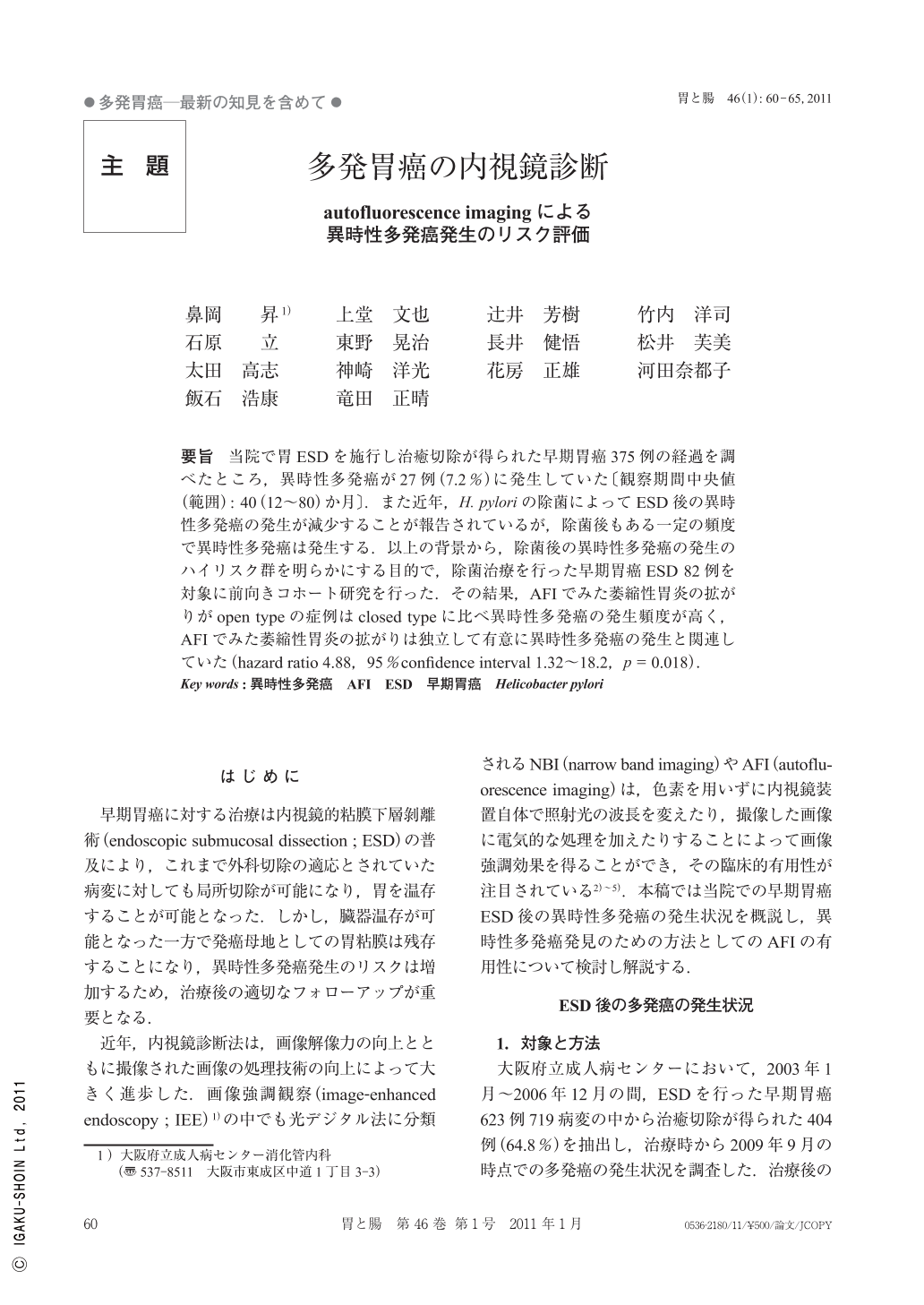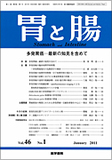Japanese
English
- 有料閲覧
- Abstract 文献概要
- 1ページ目 Look Inside
- 参考文献 Reference
要旨 当院で胃ESDを施行し治癒切除が得られた早期胃癌375例の経過を調べたところ,異時性多発癌が27例(7.2%)に発生していた〔観察期間中央値(範囲):40(12~80)か月〕.また近年,H. pyloriの除菌によってESD後の異時性多発癌の発生が減少することが報告されているが,除菌後もある一定の頻度で異時性多発癌は発生する.以上の背景から,除菌後の異時性多発癌の発生のハイリスク群を明らかにする目的で,除菌治療を行った早期胃癌ESD82例を対象に前向きコホート研究を行った.その結果,AFIでみた萎縮性胃炎の拡がりがopen typeの症例はclosed typeに比べ異時性多発癌の発生頻度が高く,AFIでみた萎縮性胃炎の拡がりは独立して有意に異時性多発癌の発生と関連していた(hazard ratio 4.88,95%confidence interval 1.32~18.2,p=0.018).
A total of 375 patients with EGC(early gastric cancer)who had undergone ESD(endoscopic submucosal dissection)were followed up with endoscopic examinations for 12 months or longer. The median follow up period was 40 months(range 12~80 months). The frequency of development of metachronous gastric cancer was 7.2%(27 patients). The cumulative incidence of metachronous gastric cancer in 3 and 5 years were 6.3 and 10.1% respectively.
Although Helicobacter pylori eradication decreases the incidence of metachronous gastric cancer after endoscopic treatment for EGC, metachronous cancer still develops after successful eradication, particularly in patients with severe corpus gastritis. We investigated whether the extent of atrophic fundic gastritis diagnosed by AFI(autofluorescence imaging)videoendoscopy is predictive of development of metachronous gastric cancer after H. pylori eradication in patients treated with ESD for EGC. Multivariate Cox's proportional hazard analysis revealed that open-type, atrophic fundic gastritis diagnosed by AFI was significantly(p=0.018)associated with development of metachronous gastric cancer after adjustment for age, sex, histological intestinal metaplasia, serum pepsinogen level, and H. pylori status(hazard ratio : 4.88, 95% CI : 1.32~18.2).
Metachronous EGC developed after successful H. pylori eradication, and extensive atrophic fundic gastritis diagnosed by AFI was a significant predictor.

Copyright © 2011, Igaku-Shoin Ltd. All rights reserved.


